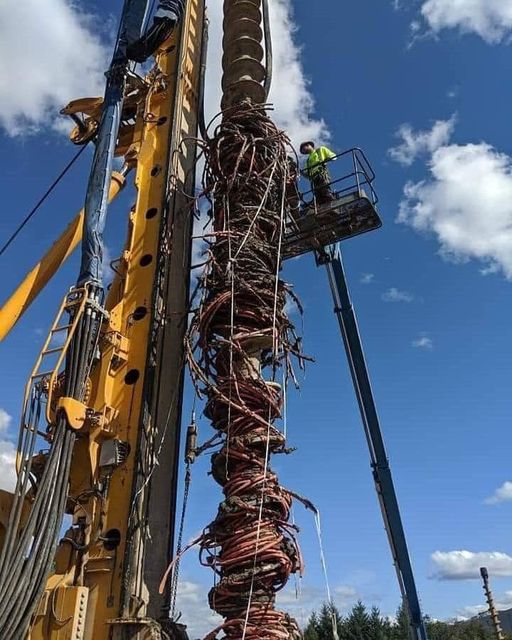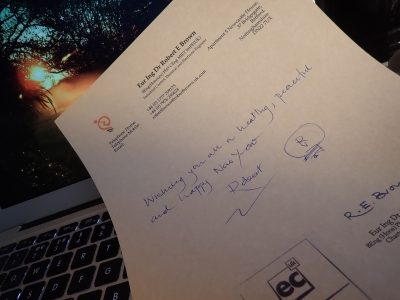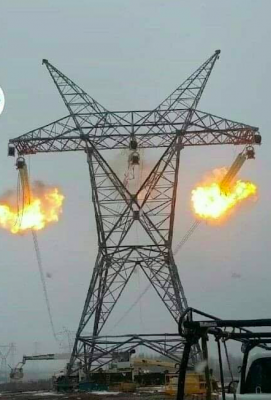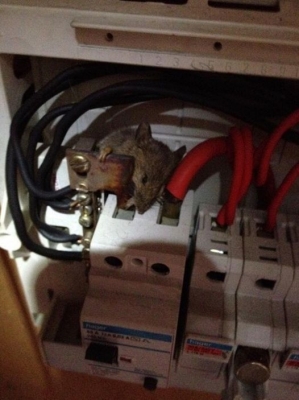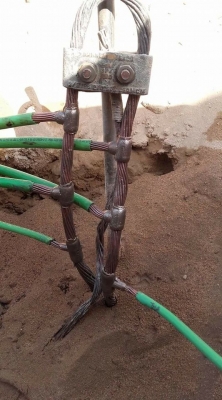The number of electrical appliances commonly used within a standard home is ever increasing. Consequently, the number of available electrical power outlet sockets required so that the appliances can be used independently and simultaneously is finite and limited by the electrical current capacity of a domestic system, generally 80-100 Ampere, the number of sockets and their location.
Given the number of sockets and their location within a standard dwelling, then to expand the number of appliances connected to the electrical system, the use of electrical extension cords/reels and socket distribution adaptors is now prevalent and ever more so during the festive Christmas period. However the use of electrical extension cords/reels and socket distribution adaptors brings with them the heightened risk of electrical system overload with increased cable, cord, adaptor temperatures and importantly the manifestation of fire ignition.
A conductor of electricity be this a cable, a wire, a metal bar or whatever, when in the process of conveying electrical current, naturally heats. That is, the passage of electrical current through the conductor causes the conductor to rise in temperature.
Given continued increase in the magnitude of electrical current conveyed by the conductor, causes the temperature of the conductor to continually rise. However if the magnitude of the electrical current stabilises, then so does the temperature of the conductor. This is because the environment of the conductor provides a suitable ‘wick’ whereby heat generated within the conductor is safely dissipated to the environment. In other words a steady state of equilibrium is achieved.
Electrical regulations and standards stipulate and present safe electrical current carrying capacities for cables and other type of electrical conductors.
An electrical extension cord/reel or a socket distribution adaptor presents the circumstance where electrical current flow from up to four (4) appliances (maybe more) is brought together, i.e. a confluence of electrical current flow. Therefore in the case of an extension cord/reel, the cable and plug are forced to covey the cumulative electrical currents of the array of appliances. Logically, this can place increased electrical stress on the cable and plug, yet moreover on the fuse inherent within the plug of the extension cord.
Figure 1 presents such a ‘stress’ circumstance, where the plug of an extension cord, is conveying increased electrical current given numerous appliances have been attached to the extension cord to source electrical power. It can be observed that one of the connections for the fuse inherent of the plug has attained a temperature of 1020C. (Note: the photograph was captured during controlled laboratory tests). In general circumstances, with plug intact, the latter circumstance is then reflected on the outer casing of the plug which attains an elevated temperature.
In general, the plastic used in the fabrication of enclosures for plugs and protective sleeving for cables are polycarbonate based and therefore can be used within a temperature range of -20°C to 140°C. So, given the circumstances prevalent in Figure 1, it follows that with increased current flow and consequential increased heating, fire ignition can manifest fuelled by the polycarbonate environment.
In short an understanding must be had in terms of the uptake of electrical extension cords/reels and socket distribution adaptors, the appliances attached thereto and the operational rating of electrical fuses inherent of BS1363 plugs of both appliance and power extension/adaptor.
A BS1362 electrical fuse, is the cartridge type fuse utilised in BS1363 plugs, i.e. the standard type of plug used in domestic electrical systems. To uphold safe operation of the parent electrical system, the BS1362 fuse inherent of a BS1363 plug should be chosen to suit the appliance to which the plug/fuse is attached.
Plugs for appliances with a power rating up to 500 watts should to be fitted with an electrical fuse with a rating no more than three (3) Amperes (coloured with red markings).
Example appliances that should be fitted with a 3 Amperes fuse are,…
Table lamp, standard lamp, television, video, computer, Christmas lights
Plugs for appliances with a power rating from 800 Watts to 1500 Watts should to be fitted with an BS 1362 electrical fuse with a rating no more than five (5) Amperes (coloured with black markings)
Example appliances that should be fitted with a 5 Amperes fuse are,…
Toaster, sandwich maker, deep fat fryer, mixer, blender, fridge, freezer, power drill, jig saw, soldering iron.
Plugs for appliances rated between about 1500 watts and 3000 watts should be fitted with an BS 1362 electrical fuse with a rating of thirteen (13) Amperes (coloured with brown markings).
Example appliances that should be fitted with a 13 Amperes fuse are,…
Washing machine, dishwasher, microwave, kettle, toaster, iron.
Eur Ing Dr Robert Brown (Robert) is the Executive Director of Fraser George and Associates Limited and is a Consultant Engineer in the fields Electrical Electronic and Control Engineering. Robert is also an accomplished professional Expert Witness having prepared and presented many court compliant reports and presented oral evidence within the High Court, Crown Courts and County Courts.
For further information please contact Robert via;
Email,…robert.brown@frasergeorge.com or robertbrown@robertbrown.uk.com
Tel Land: +44 (0)1777 709175
Tel Mobile: +44 (0) 7976250624







































































